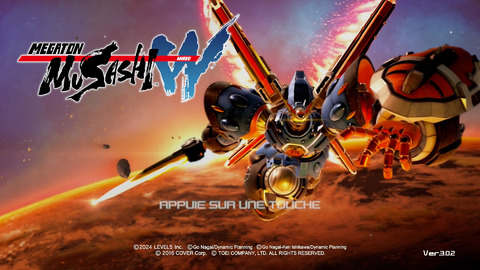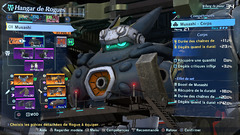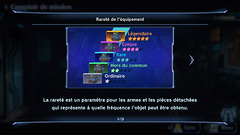After remaining confined to Japan for a long time, the latest episode of Level-5's robot fighting action-RPG series finally arrives in Europe.
The game takes place in 2118, three years after the invasion of aliens called Draktors. Survivors of the initial attack hole up in fortified shelters while governments lead the counterattack using giant robots called Rogues.
Advertisement
In the Ixia refuge, Yamato Ichidaiji and a few other students are chosen to pilot a new generation of rogue (it's an acronym, for Giant Offensive Robot Usable in Space) of the Megaton class.
The game can be divided into two distinct parts: on the one hand, the exploration of the city and the interactions with its inhabitants, including your fellow pilots, but also your classmates. The game does not, however, reach the depth of a Persona, the academic side (courses and exams) being completely non-existent here. Unfortunately, each change of location (entrance or exit from a store, or passage from one floor to another in the college for example) gives rise to a loading screen and that breaks the rhythm of the scenario a little when the action moves a lot and we end up with a load every two or three replicas.
It is also from the city that we gradually access stores and other workshops to customize and improve the robot. As usual at Level-5, the game unlocks its systems one after the other as the scenario progresses. Fortunately, here, we are on a shorter time scale and we are talking about something new every half hour and not every three or four hours as was the case in the first Ni no Kuni.
On the other side, there are the actual robot combat courses. We run, jump, dash, change weapons on the fly, it's very dynamic and fluid. And yet, over time the game becomes repetitive. Each enemy comes in three or four variants with different colors as the difficulty increases. If the environments are graphically varied, they are too few in number and also end up repeating themselves given the large number of secondary missions. Furthermore, these differences are only graphic and all levels can be summarized as a series of arenas linked together by corridors. We can also deplore that the interface during combat is quite overloaded. Finally, here too, the progression of the scenario breaks the rhythm of the fights, those of bosses in particular.
Advertisement
The customization of robots mainly involves a random generation of affixes of objects obtained in combat, like a Diablo. There is choice, but not too much: there are around fifty different robots (including collaborations with Mazinger Z, Getter Robot, Combatter V and Voltes V) and nine types of weapons. It is possible to mix different robots together, but the presence of set bonuses does not encourage this. Rank, rarity, statistics, almost everything is then upgradeable as long as you have farmed the necessary materials.
Now for the detail that might be annoying: the game was free to play when it was initially released in Japan. On the one hand, it still contains a login bonus system, a two-tier battle pass (the Premiums tier is reserved for buyers of the Deluxe version) and “lootboxes” (Although I must admit that, For now, both treasure chests and their keys are available only by playing the game – as rewards for missions or achievements). On the other hand, if the vast majority of the game's content is unlockable by progressing in the game, certain cosmetics (mainly alternative outfits for playable characters and certain paint colors exclusive to rogues) are only available through microtransactions; and there are already some for around 60 euros at the time of writing this test.
The game is fully translated into French (but with Japanese voices only) and this is a plus for a game which is mainly aimed (I think) at the same audience as Yokai Watch and Inazuma Eleven, namely children of a ten years (for information, it is classified PEGI 12 because of microtransactions). If for the scenario and dialogues, the translation is of fairly good quality, this is unfortunately not the case everywhere. We sometimes find unfortunate choices in the menus and inventory; nothing technically wrong, but another translation would have been more appropriate. For example, Memory of X for an object called in English X memory, but in context it is “memory” in the computing sense. More surprisingly, in places one of the guest robots (the Getter Robot) was translated into “Retrieval Robot”.
In conclusion, despite my complaints, I enjoyed the game, which is full of good ideas. The city phases do not last too long, the action phases are nervous and the customization options are quite numerous and encourage the creation of units specialized in a type of weapon or damage. Replayability (and therefore lifespan) is very high with a plethora of secondary missions and several difficulty levels. If the game fails a little in the presentation of its scenario, we cannot however say that it is bad. It has the merit of remaining concise, and of systematically evolving in an unexpected direction. The game should be able to satisfy its audience, especially during short games. We can only regret that it is not more highlighted by its publisher (as with other productions from the studio – again, Inazuma Eleven and Yokai Watch – it was entitled to its anime, but this one is available on Crunchyroll uniquely). So perhaps the upcoming competition from Gundam Breaker 4, which uses an already existing license.
Test carried out on PlayStation 4 by Alenn Tax from a version provided by the publisher.


